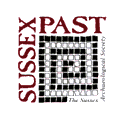Sussex Archaeological Collections: Relating to the history and antiquities of the counties of East and West Sussex
Sussex Archaeological Society, 2000. (updated 2022) https://doi.org/10.5284/1000334. How to cite using this DOI
Data copyright © Sussex Archaeological Society unless otherwise stated
This work is licensed under the ADS Terms of Use and Access.
Primary contact
Jaime
Kaminski
Sussex Archaeological Society
Barbican House
169 High Street
Lewes
BN8 1YE
Resource identifiers
- ADS Collection: 285
- DOI:https://doi.org/10.5284/1000334
- How to cite using this DOI
A Mirror to Armageddon
The landscape of Sussex in the First World War: trench systems, defence plans and military training in Sussex 1914-1918
By PETER CHASSEAUD
This paper developed from research undertaken for a joint paper by Martin Brown and Peter Chasseaud, presented by the former at the conference The Edge of Dark - Sussex During the Great War organised by the Sussex Archaeological Society in association with the University of Sussex Centre for Continuing Education, and held at the University of Sussex in 2001. Much historical work has been done on Sussex in the First World War, and some has been published on the wartime landscape; several studies (e.g. Curwen 1930; Longstaff-Tyrrell 2000, 2002; Grehan and Mace 2012) include much valuable visual material (Fig. 1). Fixed fortifications have long been the focus of serious attention (Saunders 1989, 1997). This study focuses on the changes in the landscape associated with the war, on the sources for these, and on visual representations of the wartime topography - photographs, maps, paintings, etc. It aims to establish a clearer visual image of the terrain during the war, and to aid future archaeological work by contextualising earthworks, artefacts and other material and documentary evidence. The rapid growth of conflict landscape archaeology in the UK and internationally (Freeman & Pollard 2001; Saunders et al. 2009) is creating a theoretical and methodological framework within which the investigation of Sussex sites clearly falls. This work includes a gazetteer of Sussex 1914-18 sites. The author is, among other things, a historian of military survey and mapping, and has acted as a consultant on First World War battlefields to the West Flanders Government and to the British All Party Group on War Graves and Battlefield Heritage. His most recent book, Mapping the First World War, was published by HarperCollins in November 2013. A list of abbreviations used can be found immediately before the References.





